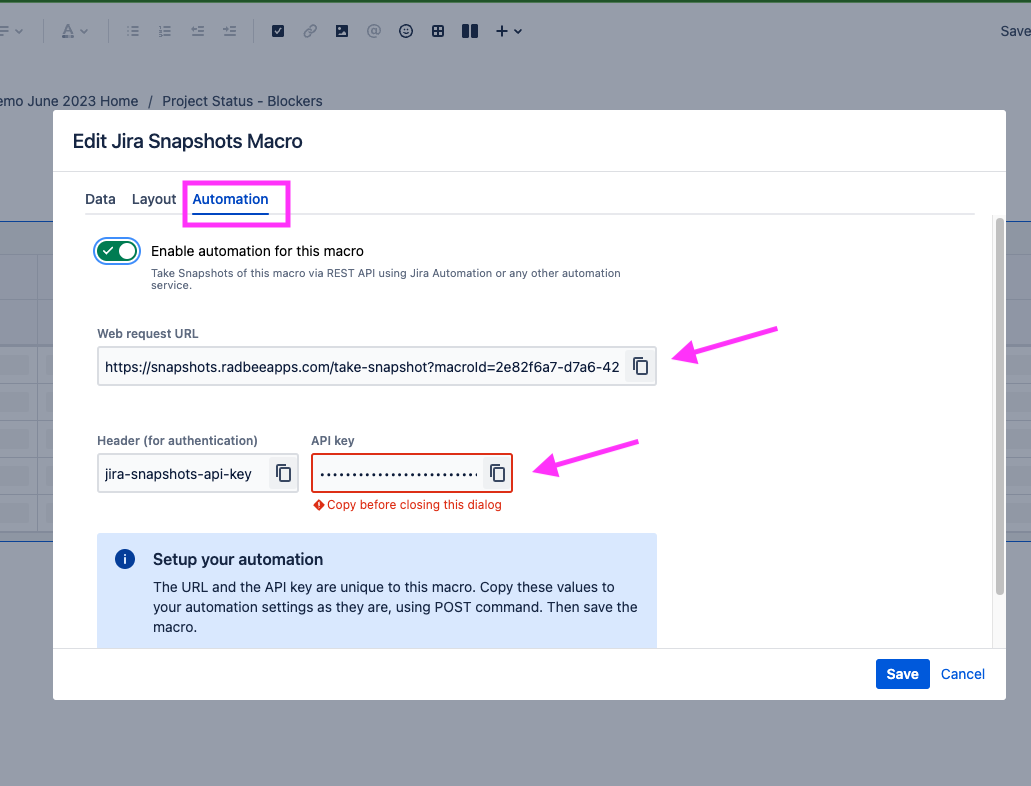Use Cases for Triggering Snapshots Automatically
It’s easy enough to go Confluence and click “Take New Snapshot”, but that requires a manual, human, action.
Some scenarios are so predictable, that you can trigger a new Snapshot via auto-pilot, ensuring the Snapshot will have the correct data even when you are not around:
-
Weekly status report is due every Friday? Set up a Jira automation scheduled rule, that triggers a new Snapshot every Friday morning.
-
Using Jira Snapshots to share Jira Service Management status with user? Trigger a Snapshot each time that an applicable update happens in Jira.
-
Using Jira Snapshot to generate test report? Trigger a newSnapshot directly from your CI/CD pipeline each time your automatic integration tests where executed.
Syntax
The following two parameters are required, and are unique for each Jira Snapshot macro:
-
A MACRO-SPECIFIC-URL
-
An API-KEY.
Retrieve these parameters from the macro configuration window, on the “Automation tab”

![]()
![]()
This is the REST CALL syntax to trigger a new Snapshot for an existing, configured, Jira Snapshot macro:
POST <MACRO-SPECIFIC-URL>
With this obligatory header:
-
jira-snapshots-api-key: <API-KEY>
Here is how it looks with a curl call
curl --location --request POST '<MACRO-SPECIFIC-URL>' \
--header 'jira-snapshots-api-key: <API-KEY>'
You can use this endpoint to trigger a new snapshots from Jira Automation
Revoking The Possibility to Trigger The Snapshot
To remove the possibility for all existing automation to trigger one of the Snapshot macros, you may:
-
Regenerate the API Key. This will make all existing automation invalid (until they are updated with the new key).
-
Disable the automation for this specific macro.

A Confluence administrator can also revoke all enabled automations .
